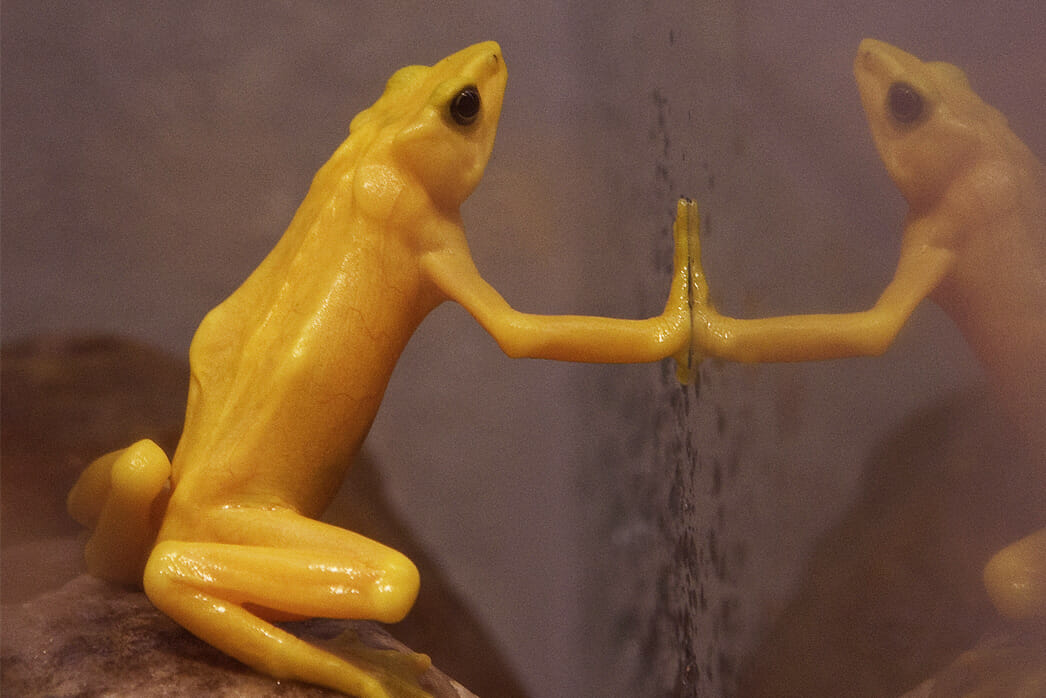Panamanian golden frog
Atelopus zeteki
At the Detroit Zoo
The Detroit Zoo is a part of the captive breeding program that may be the only hope for the Panamanian golden frog’s survival. The “assurance population” that the Zoo maintains may someday be able to return frogs to the wild in Panama. DZS staff regularly travel to Panama to assist with conservation efforts within the country. The Panamanian golden frog can be seen at the award-winning National Amphibian Conservation Center – a leader in amphibian conservation and research – which houses a spectacular diversity of frogs, toads, salamanders, newts and caecilians.
Description
Panamanian golden frogs are slender with long limbs. Depending on the individual, they may have black splotches over their bright yellow skin. They also change colors while developing, starting off as blackish-gray tadpoles with yellowish spots. When they emerge on land, they become a stunning green with black markings and later switch into the well-known golden color. If you look closely, it might appear that these frogs “wave” to other golden frogs. This species developed this behavior as a way of communicating near fast-moving streams where audible calls may not be useful. The beautiful and once locally revered golden frogs of Panama may be extinct in the wild as a result of deforestation, capture by people for the pet trade and amphibian chytrid fungus. The growing human population in Panama exerts greater pressure on wild ecosystems as areas are cleared for cattle farming and as the use of chemical fertilizers and insecticides in agriculture increases. The chytrid fungus infection that is spreading through Central America (and other parts of the world) is having a devastating effect on this species and many other amphibian species.
Fun Facts
-
Panamanian golden frogs produce a nerve toxin that hurts their predators when attacked.
-
These frogs are considered good luck in Panama and are that country's national animal.







